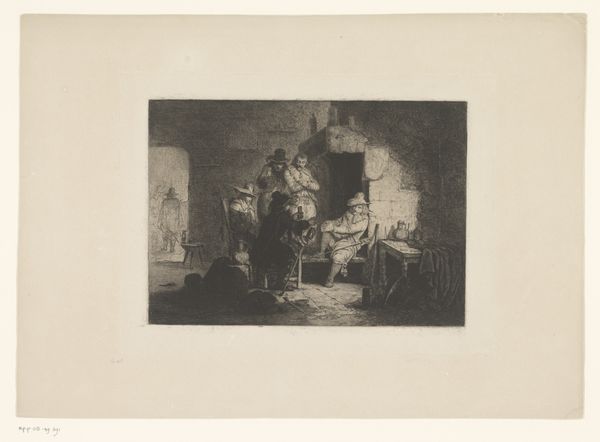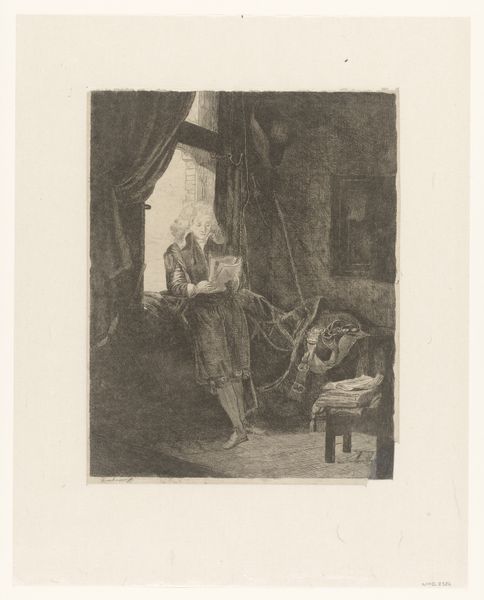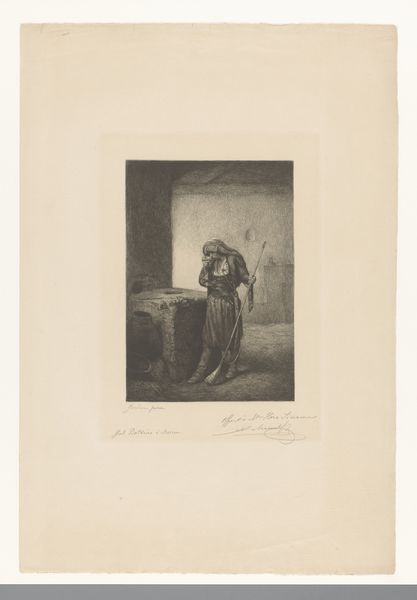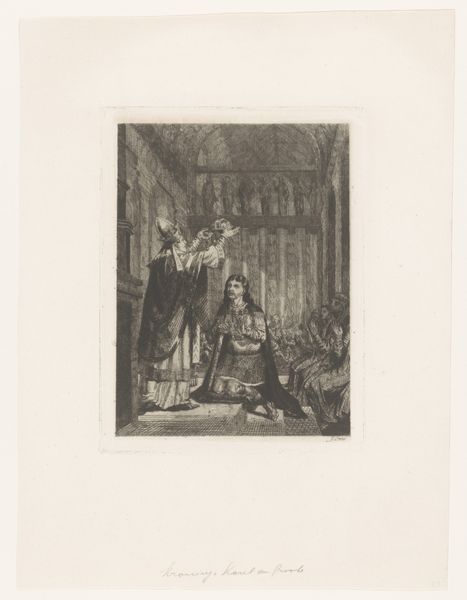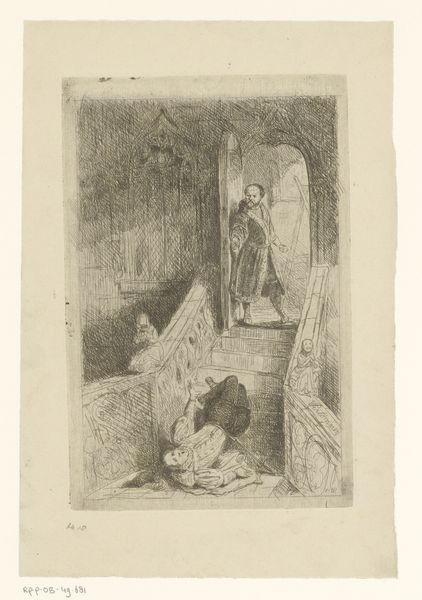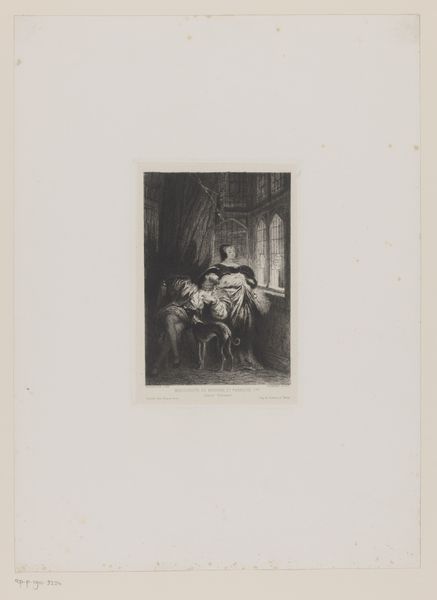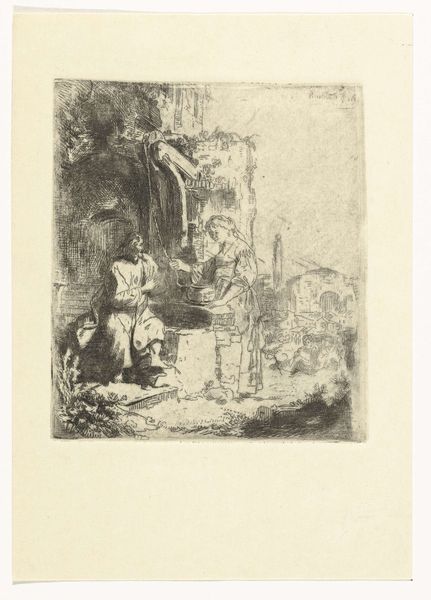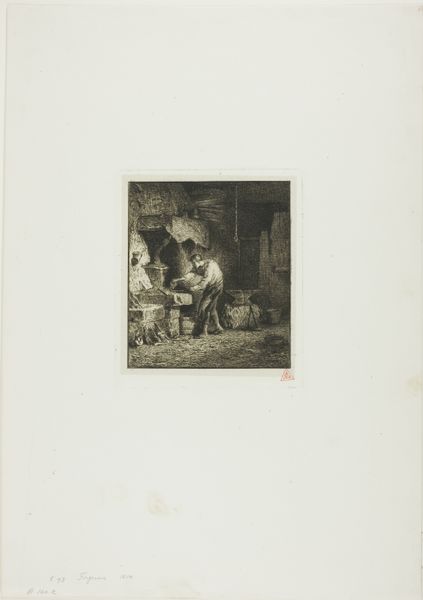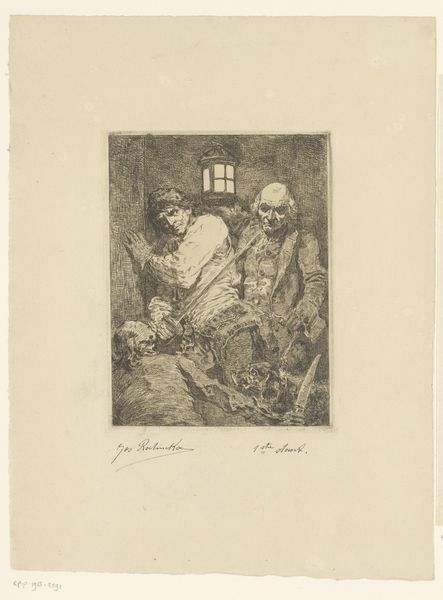
drawing, etching
#
portrait
#
pencil drawn
#
drawing
#
light pencil work
#
mother
#
head
#
etching
#
pencil sketch
#
old engraving style
#
figuration
#
form
#
personal sketchbook
#
ink drawing experimentation
#
pen-ink sketch
#
line
#
sketchbook drawing
#
pencil work
#
genre-painting
#
sketchbook art
#
realism
Dimensions: height 180 mm, width 124 mm
Copyright: Rijks Museum: Open Domain
Editor: Here we have Albert Dillens' "Interior with a Woman Washing a Child's Ear", an etching from 1874 housed in the Rijksmuseum. It’s a busy, intimate domestic scene. It feels incredibly realistic. What do you see in this piece? Curator: Beyond its apparent realism, I see a deliberate commentary on the everyday life of a specific social class. Consider the institutional context: Genre paintings like these gained popularity in the mid-19th century, mirroring the rise of the middle class and their desire to see themselves represented in art. This etching, though small in scale, participates in that wider visual culture. What does the scene suggest about the values and concerns of that social class? Editor: Well, there’s definitely an emphasis on cleanliness and domestic order, wouldn't you agree? It suggests that these things are important… a kind of visual representation of bourgeois ideals maybe? Curator: Exactly. And think about the role of the museum itself. By displaying this intimate scene publicly, the museum transforms a private moment into a representation of shared cultural values, right? Editor: That makes perfect sense! It’s like the museum is legitimizing a certain lifestyle, saying, "This is important, this is worth preserving and displaying." I never really thought about art having that purpose, but it totally checks out here. Curator: Indeed. It’s a reminder that even the most seemingly neutral depictions of everyday life are embedded in socio-political narratives. These narratives, reproduced by the museum through artworks like this, are incredibly powerful! Editor: I learned a great deal and will rethink how artistic intent serves societal purposes from now on. Thank you. Curator: It has been a genuine pleasure for me, too.
Comments
No comments
Be the first to comment and join the conversation on the ultimate creative platform.
